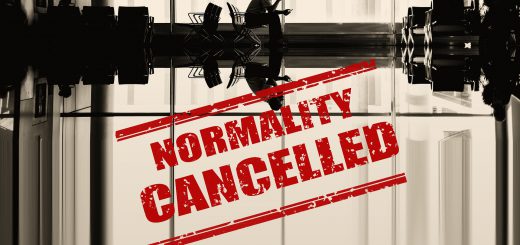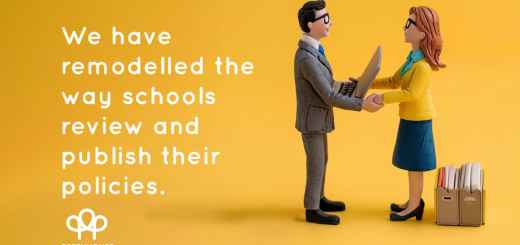What does home learning look like?
We are in the middle of the second week of school closures across the UK. The education landscape looks very different to what it did a month ago. We are hearing lots about how everyone is now home learning. But what does home learning look like and how realistic is it for schools to support from afar? And how are schools managing with key worker children still in school?
Terminology is everything
We have never been in a situation like this in our lifetimes but it seems that the terminology used around home learning can cause a shift in expectation quite easily. When the term home school is used it seems to conjure images of a neatly set up desk with a laptop, a pile of books and folders, and a stationery set. A timetable is pinned to the notice board and the laptop is ready to welcome the teacher into the home via the wonders of video conferencing. This term has made some parents demand more and more work from teachers. They want to be provided with timetables which fill the whole day so their child can stay on top of their amazing future exam grades.
From the school side there may also be expectations leading to providing as many resources and online learning sessions as possible in order to recreate everything which would have usually been taught in these weeks and months. Every school will be wondering what happens next and therefore be preparing for the scenario where Ofsted turns up at the door on day 1 back after isolation. An unlikely scenario but one which has likely flitted across some school leader’s minds.
In reality, however, not every family, not even the majority, will be able to facilitate a school-from-school situation in the home. A lack of space, resources, wifi, and time are all major factors inhibiting the ideal home school. Siblings are also likely to be in the mix. Whether these are younger siblings of pre-school age who may not understand the necessity of a neat desk, or other school-aged siblings who also need a desk space and access to the family laptop or wifi capacity for video lessons too.
Many parents are also working from home. Not only does this mean someone else is wanting the desktop and laptop, but also means they are not on-hand during school hours to assist their child with reaching their full potential in every subject.
Parents of secondary children are unlikely, also, to feel confident being the resident expert in a wide range of curriculum topics and subjects. Parents of primary school children will find it difficult to pitch work at the right level for their child and to get the amount of work time right.
Realistically, if children were in school, they would not be having more than one hour a day of intense 1:1 teacher time. Yet parents may be attempting, and schools may be expecting, to spend 6 hours a day on school work which may be very overwhelming for all concerned.
Home learning seems a more likely scenario where parents can help in much the same way they always have done with homework in the past. A little more homework, perhaps, to balance out the lost school time.
Schools are closed?
We keep hearing from the media that schools are closed. In reality, however, many are still open in various forms. Most are still open even for a handful of key worker’s or vulnerable children to provide childcare and some learning in usual working hours. Many are opening for longer hours too to compensate for the lack of after school clubs or breakfast clubs usually facilitated by outside agencies.
Schools are also attempting, whether open for learning or not, to provide meals and packed lunches for any children who would be usually having free school meals. This involves still cooking hot meals and serving them while maintaining safe distances. Or many schools are doing a delivery service to their local families either daily or weekly to ensure they have all they need.
Schools are also trying to ensure that safeguarding is prioritised. Daily or weekly calls home. Using online communication tools to check that families are well and happy. Many families are likely to be affected by the virus so this means schools are checking up on everyone they can – not just families known previously to be vulnerable. This takes time and coordination.
What is actually happening?
So far, from what we can gather from social media and discussions with schools and parents, there seems to be little consistency from school to school or house to house. This is to be expected, given no clear guidance still from the Department for Education on many matters from catering to education, and is likely to continue until some clearer guidance comes from them.
There is a lot of advice around, and a seemingly never-ending stream of available free resources and help from companies across education. The DfE have said they are also working with the BBC and other suppliers to come up with an offering for home learning. Which is interesting in itself as it seems to suggest that they do not expect schools to be managing home learning fully by themselves. It will be fascinating to see what that looks like when it arrives. Will they have a schedule for homes? Will they specifically take the strain from schools? Or will it be a general guidance with nothing obligatory? Will they make any final decisions or give advice about what schools should do for the next year if a big chunk of the curriculum is missed this year? I doubt even the DfE knows the answers to all of those questions yet but hopefully something will come up in good time – perhaps after Easter.
Schools are all trying really hard to be all things to all people at the moment. The online teachers, the food providers, the working from home parent teacher, the childcare for vulnerable children, the planners for next year’s curriculum, the online markers, and the exam board. It is no easy task. We are in awe of every teacher and school leader who is working through this right now.
As parents looking after our own young children at home while working we can only imagine the many plates which are spinning above your heads right now. We do not know the perfect answer to what to do right now. All we can say is that we will keep monitoring and compiling any advice we can, and we know you are doing a great job. Keep going, stay safe, and we will all have learnt a lot about this by the end even if it feels like swimming through mud right now!













